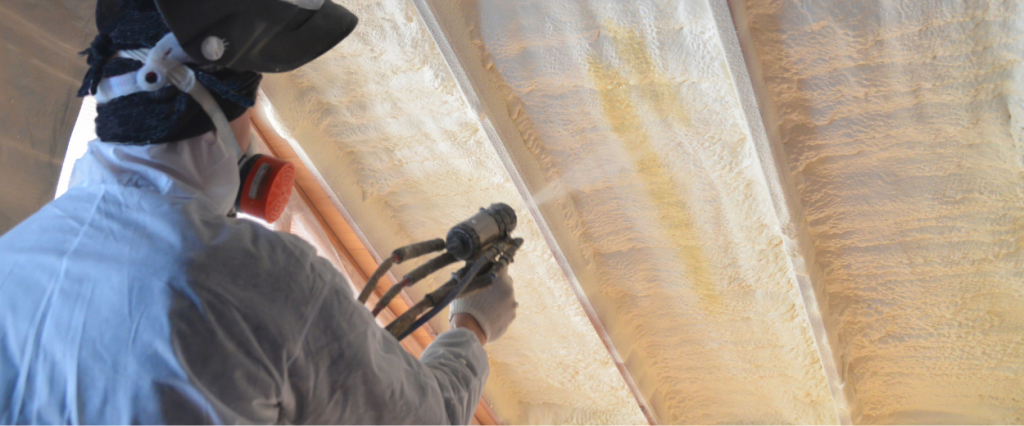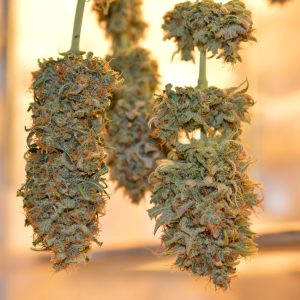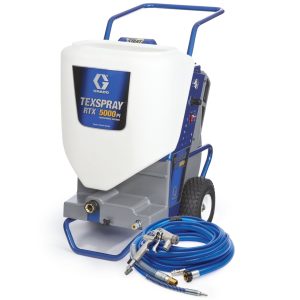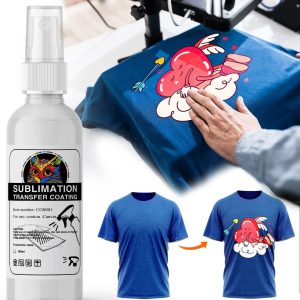
When considering home insulation upgrades, spray foam insulation cost is often the first concern homeowners have. While the initial investment may seem higher than traditional insulation materials, understanding the true value and long-term savings can help you make an informed decision. This comprehensive guide breaks down everything you need to know about spray foam insulation pricing, factors that affect costs, and whether this premium insulation solution is worth the investment for your home.
What is Spray Foam Insulation and Why Consider It?
Spray foam insulation is a cutting-edge insulation material that expands upon application to create an airtight seal in walls, attics, crawl spaces, and other areas of your home. Unlike traditional fiberglass or cellulose insulation, spray foam creates a continuous barrier that prevents air leakage, moisture infiltration, and energy loss. The material comes in two primary types: open-cell and closed-cell foam, each with distinct properties and pricing structures.
The growing popularity of spray foam insulation stems from its exceptional performance characteristics. This insulation method can reduce energy bills by up to 50% compared to homes with traditional insulation, according to the Department of Energy. Additionally, spray foam insulation provides structural reinforcement, pest deterrence, and superior moisture control, making it a comprehensive solution rather than just an insulation material.
Understanding Spray Foam Insulation Cost Factors
Type of Spray Foam Insulation
The spray foam insulation cost varies significantly between open-cell and closed-cell varieties. Open-cell spray foam typically costs between $0.44 to $0.65 per board foot, while closed-cell spray foam ranges from $1.00 to $1.50 per board foot. The price difference reflects the superior performance characteristics of closed-cell foam, which offers higher R-value per inch and acts as a vapor barrier.
Open-cell foam expands more during application, covering larger areas with less material, but provides lower insulation value per inch. Closed-cell foam is denser, offers better structural support, and provides superior moisture resistance, justifying its higher cost for many applications.
Project Size and Scope
The total square footage of your insulation project significantly impacts the overall spray foam insulation cost. Larger projects benefit from economies of scale, with contractors often offering reduced per-square-foot pricing for extensive applications. Here’s a typical pricing breakdown:
| Project Size | Cost per Square Foot | Total Project Range |
|---|---|---|
| Small (500-1,000 sq ft) | $1.50 – $3.50 | $750 – $3,500 |
| Medium (1,000-2,500 sq ft) | $1.25 – $3.00 | $1,250 – $7,500 |
| Large (2,500+ sq ft) | $1.00 – $2.50 | $2,500 – $12,500+ |
Geographic Location
Regional variations in spray foam insulation cost can be substantial due to differences in labor costs, material availability, and local building codes. Urban areas typically see higher prices due to increased labor costs and overhead expenses. For example, spray foam insulation in major metropolitan areas like New York, Los Angeles, or Chicago may cost 20-40% more than similar projects in rural or suburban locations.
Climate considerations also influence pricing, as homes in extreme weather conditions may require thicker applications or specific foam formulations, increasing overall project costs.
Detailed Spray Foam Insulation Cost Breakdown by Application
Attic Spray Foam Insulation Cost
Attic insulation represents one of the most common and cost-effective spray foam applications. The spray foam insulation cost for attics typically ranges from $1,500 to $4,500 for an average-sized home. This investment can yield immediate energy savings, as attics are responsible for up to 40% of home energy loss.
When insulating attics with spray foam, contractors must consider ventilation requirements, existing insulation removal costs, and access challenges. Blown-in applications may cost less initially but often require removal, adding $1-3 per square foot to the project cost. The superior air sealing properties of spray foam make it particularly valuable in attic applications, where traditional insulation often fails to prevent air leakage around penetrations and irregular spaces.
Basement and Crawl Space Insulation Costs
Basement and crawl space spray foam insulation cost ranges from $1.50 to $4.00 per square foot, depending on moisture conditions and accessibility. These areas present unique challenges that justify premium pricing, including moisture management, irregular surfaces, and confined working conditions.
Closed-cell spray foam is typically recommended for basement applications due to its moisture resistance and structural benefits. While the initial investment is higher, the long-term benefits include reduced humidity, prevention of mold growth, and elimination of cold floors above uninsulated basements.
Wall Insulation Spray Foam Cost
Insulating existing walls with spray foam requires careful consideration of access methods and associated costs. Spray foam insulation cost for walls ranges from $2.00 to $6.00 per square foot, with injection methods being more expensive than new construction applications.
Retrofit wall insulation often requires drilling access holes and may involve some interior or exterior finish repair work. However, the superior performance of spray foam in wall applications can dramatically improve home comfort and energy efficiency, particularly in older homes with poor insulation.
Professional Installation vs. DIY Spray Foam Insulation Cost
Professional Installation Advantages
Professional installation represents the majority of spray foam insulation cost but provides numerous advantages that justify the expense. Licensed contractors bring specialized equipment, proper safety protocols, and warranty protection that DIY applications cannot match. Professional installation costs typically range from $1.50 to $4.50 per square foot, including materials and labor.
The complexity of spray foam application requires precise temperature control, proper mixing ratios, and safety equipment to handle potentially hazardous chemicals. Professional installers also carry insurance and provide warranties, protecting homeowners from potential issues or application failures.
DIY Spray Foam Kits
DIY spray foam kits offer a lower-cost alternative, with spray foam insulation cost ranging from $0.50 to $1.50 per square foot for materials only. However, these kits are typically suitable only for small projects and require careful attention to safety protocols and application techniques.
Common DIY kit sizes and costs include:
- Small kits (200-600 sq ft coverage): $300 – $800
- Medium kits (600-1,200 sq ft coverage): $800 – $1,500
- Large kits (1,200+ sq ft coverage): $1,500 – $3,000
Return on Investment and Long-Term Spray Foam Insulation Cost Savings
Energy Savings Analysis
The initial spray foam insulation cost is offset by significant long-term energy savings. Homeowners typically see 30-50% reductions in heating and cooling costs, with payback periods ranging from 5-12 years depending on local energy costs and climate conditions.
Case Study: A 2,000 square foot home in Minneapolis spent $8,500 on closed-cell spray foam insulation. The homeowner reported annual energy savings of $1,200, resulting in a 7-year payback period. Over the 20-year expected life of the insulation, total savings exceeded $15,000, not including increased home value.
Additional Financial Benefits
Beyond energy savings, spray foam insulation provides additional financial benefits that improve the overall return on investment:
- Increased home value: Studies show spray foam insulation can increase home value by 3-5%
- Reduced HVAC maintenance: Better temperature control reduces system wear
- Lower humidity control costs: Improved air sealing reduces moisture issues
- Potential insurance discounts: Some insurers offer discounts for energy-efficient homes
Factors That Can Increase Spray Foam Insulation Cost
Preparation and Access Requirements
Several factors can significantly increase spray foam insulation cost beyond standard applications. Preparation work often represents 20-30% of total project costs and includes:
- Existing insulation removal: $1-3 per square foot
- Air sealing preparation: $0.50-1.50 per square foot
- Surface cleaning and prep: $0.25-0.75 per square foot
- Access improvements: $500-2,000 depending on requirements
Special Conditions and Upgrades
Certain conditions require specialized approaches that increase costs:
- Moisture remediation: $2-8 per square foot for mold or water damage
- Irregular surfaces: 15-25% cost increase for complex geometries
- Fire-rated applications: $0.50-1.00 per square foot for fire-retardant formulations
- Extreme thickness requirements: Additional material costs for R-values above standard applications
How to Get Accurate Spray Foam Insulation Cost Estimates
Choosing Qualified Contractors
Obtaining accurate spray foam insulation cost estimates requires working with qualified, licensed contractors who can assess your specific needs. Look for contractors with:
- Proper licensing and insurance: Verify current status with local authorities
- Manufacturer certifications: Major foam manufacturers require training for certified installers
- Local references: Check recent customer reviews and project photos
- Detailed written estimates: Avoid contractors who provide only verbal quotes
Questions to Ask Contractors
When soliciting spray foam insulation cost estimates, ask specific questions to ensure accurate comparisons:
- What type of spray foam is recommended for each area?
- What R-value will be achieved with the proposed thickness?
- Are there any additional preparation costs not included in the base estimate?
- What warranty coverage is provided on materials and installation?
- How will existing insulation or ventilation systems be handled?
Spray Foam Insulation Cost Comparison with Other Insulation Types
Cost-Benefit Analysis
While spray foam insulation cost is higher than traditional alternatives, the performance benefits often justify the premium. Here’s a comprehensive comparison:
| Insulation Type | Cost per sq ft | R-Value per inch | Air Sealing | Moisture Resistance |
|---|---|---|---|---|
| Spray Foam (Closed-cell) | $1.00-$1.50 | R-6 to R-7 | Excellent | Excellent |
| Spray Foam (Open-cell) | $0.44-$0.65 | R-3.5 to R-4 | Very Good | Good |
| Fiberglass Batts | $0.30-$0.50 | R-3.1 to R-3.4 | Poor | Poor |
| Cellulose | $0.35-$0.55 | R-3.6 to R-3.8 | Fair | Fair |
| Rigid Foam Board | $0.50-$1.00 | R-4 to R-6.5 | Good (with sealing) | Good |
Long-Term Value Proposition
The higher initial spray foam insulation cost becomes more reasonable when considering the 20+ year lifespan and superior performance characteristics. Traditional insulation materials may require replacement or supplementation over the same period, while spray foam maintains its effectiveness throughout its service life.
Financing Options for Spray Foam Insulation Cost
Energy Efficiency Incentives
Many utilities and government programs offer rebates and incentives that can significantly reduce spray foam insulation cost. Common programs include:
- Utility rebates: $0.10-$0.50 per square foot or 10-20% of project cost
- Federal tax credits: Up to 30% of project cost (subject to annual limits)
- State and local incentives: Varies by location, often 5-15% of project cost
- Manufacturer rebates: Seasonal promotions offering $100-$500 off qualifying projects
Financing Solutions
Several financing options can help manage spray foam insulation cost:
- Home improvement loans: Fixed-rate loans specifically for energy upgrades
- PACE financing: Property-assessed clean energy loans tied to property taxes
- Contractor financing: Many installers offer payment plans or promotional financing
- Home equity options: Using existing home equity for energy improvements
Common Spray Foam Insulation Cost Mistakes to Avoid
Underestimating Project Scope
Many homeowners underestimate the true spray foam insulation cost by focusing only on material prices. A comprehensive budget should include:
- Preparation work: Often 20-30% of total cost
- Permit fees: $50-$500 depending on local requirements
- Temporary climate control: May be needed during application
- Finish work: Trim, paint, or surface repairs after installation
Choosing Based on Price Alone
Selecting contractors solely based on the lowest spray foam insulation cost estimate often leads to poor outcomes. Consider the total value proposition, including:
- Quality of materials: Premium foams perform better and last longer
- Installation expertise: Proper application is critical for performance
- Warranty coverage: Protection against application defects
- Company reputation: Established contractors provide better long-term support
Conclusion: Making the Right Decision About Spray Foam Insulation Cost
Understanding spray foam insulation cost requires looking beyond the initial investment to consider long-term performance, energy savings, and overall home improvement value. While spray foam insulation represents a significant upfront investment, typically ranging from $1,500 to $12,500 for most residential applications, the superior performance characteristics and energy savings often justify the premium pricing.
The key to successful spray foam insulation projects lies in working with qualified contractors, understanding your specific needs, and considering the total cost of ownership rather than just initial expenses. With proper planning and professional installation, spray foam insulation can provide decades of superior performance, significant energy savings, and improved home comfort that far exceed the initial spray foam insulation cost.
Whether you’re building a new home or upgrading existing insulation, spray foam offers a premium solution that delivers measurable results. By understanding the factors that influence pricing and working with qualified professionals, you can make an informed decision that balances upfront costs with long-term benefits, ensuring your insulation investment provides maximum value for your specific situation.





